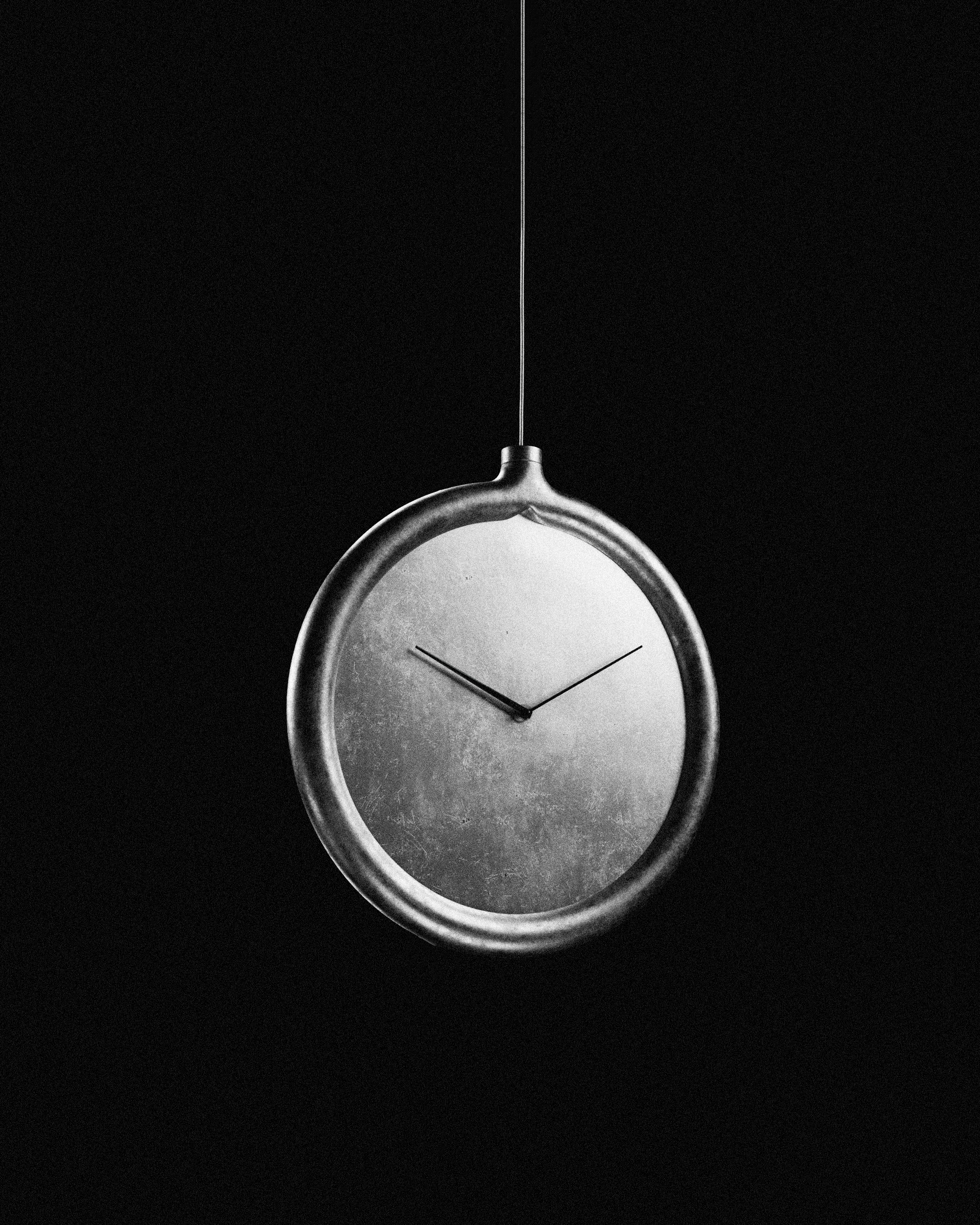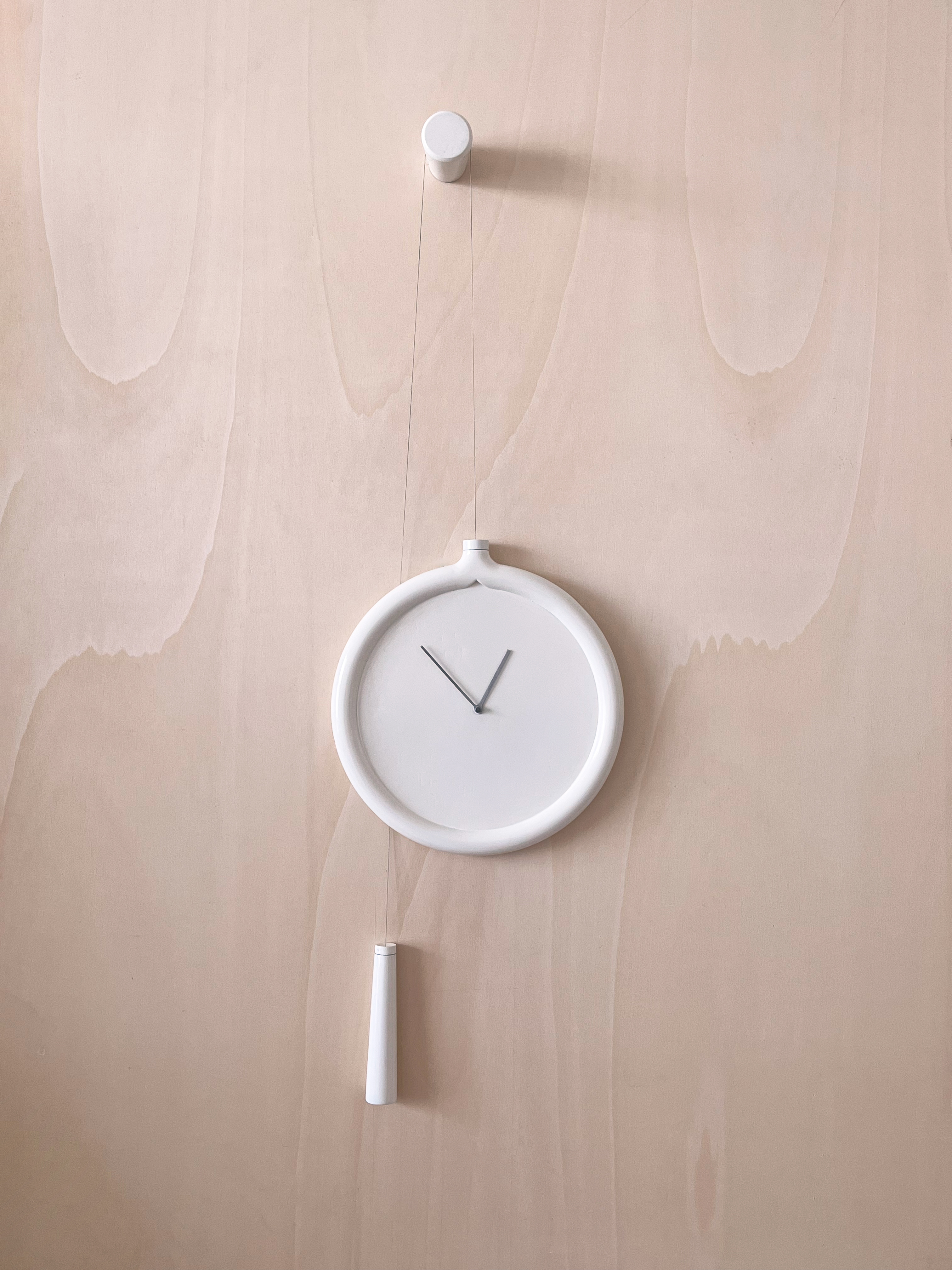Fr / En
Pendule.
With Gaëtan Maistrello.
Winner of the 18th Cinna Competition and exhibited at Milan Design Week 2025 as part of the “Casa Tempo” exhibition.
Whether we contemplate it or forget it, time has passed, is passing, and will pass.
The very use of a clock is timeless: it gives form to the flow of time, becoming an object that bears witness.
Across the ages, from the earliest mechanical clocks driven by a falling weight turning their gears, to the famous 17th-century German cuckoo, and on to Dieter Rams’s ultra-standardized clock, this object reflects eras and cultures.
True to that lineage, Pendule likewise stands as a witness object.
Drawing on traditional craftsmanship, it becomes a decorative piece that dresses a living space with simple, timeless graphic forms.
The clock and the wall hook are cast in aluminum, while the counterweight is cast in bronze, compensating for the difference in material density. This pairing yields an equivalent weight of about 1 kg for the two suspended parts.
As a result, the clock’s height can be adjusted simply by raising or lowering the counterweight.







Pendule.
Whether we contemplate it or forget it, time has passed, is passing, and will pass.